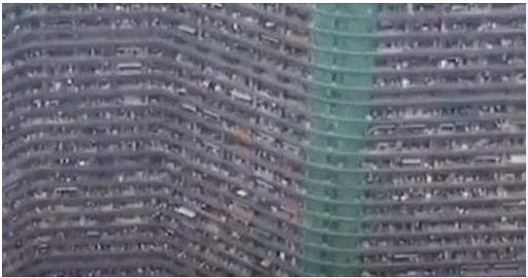A mesmerizing TikTok video has sparked global interest in China’s Regent International apartment building, dubbed the “Dystopian Apartment.” With a staggering capacity for 30,000 residents, this colossal structure has raised questions about the future of urban living.
Located in Hangzhou’s Qianjiang Century City, the Regent International was designed by Alicia Loo and completed in 2013. Standing 675 feet tall, its unique S-shape design spans 36 or 39 floors, depending on the side. This mega-structure is one of the most densely populated areas worldwide, housing approximately 20,000 residents.

The building boasts an impressive array of amenities, including restaurants, pools, nail salons, grocery stores, and internet cafes. Residents can access everything they need without ever leaving the premises. While some worry about the lack of fresh air and sunlight, most residents are young professionals and students who value the convenience and affordability.
Units range from 1,500 RMB ($200) to 4,000 RMB ($600) per month, making it an attractive option for those seeking cost-effective living. The Regent International has been hailed as “the most sustainable living building on earth” due to its innovative design.
As the US faces a housing crisis, this concept offers a potential solution. The city of Whittier, Alaska, has already adopted a similar approach, with a 14-story building housing 272 residents and providing amenities like a church, school, and post office.
However, concerns arise regarding personal space and outdoor access. Americans typically value privacy and yard space. To mitigate this, larger units with balconies offer some relief. While it may not be ideal for everyone, the Regent International presents an intriguing alternative for urban living.
Would you consider living in a mega-structure like this? The Regent International sparks important discussions about the future of housing and the trade-offs between convenience, sustainability, and personal space.


